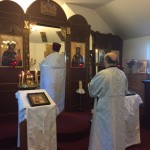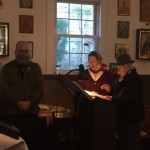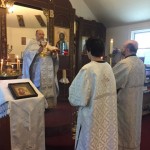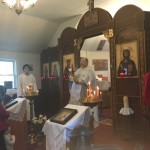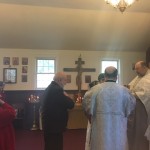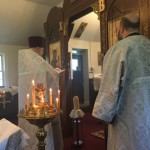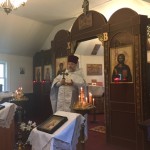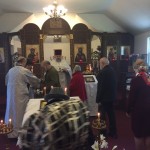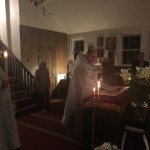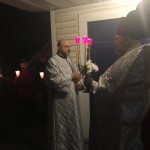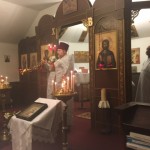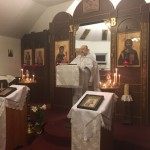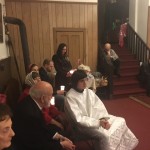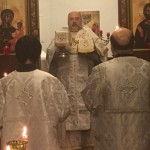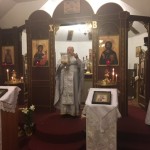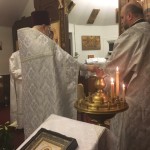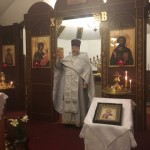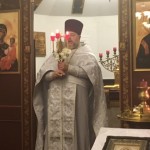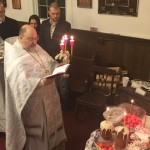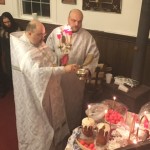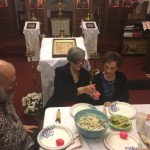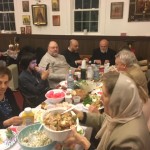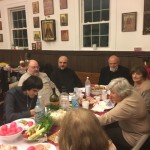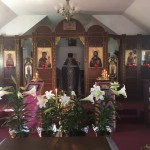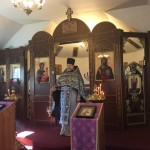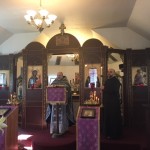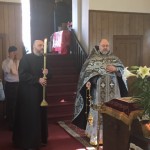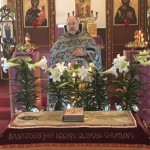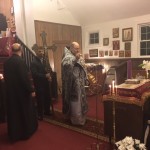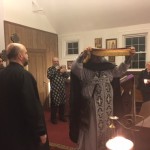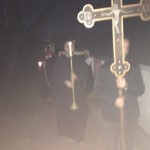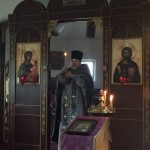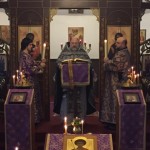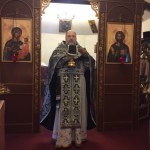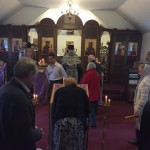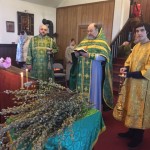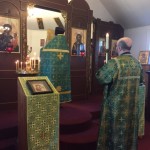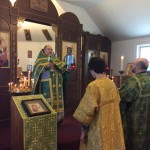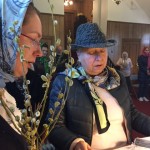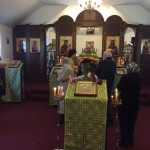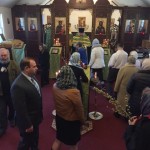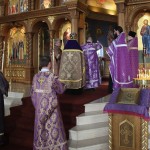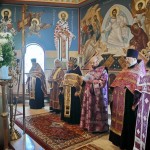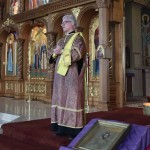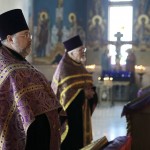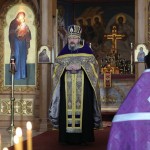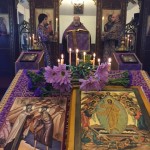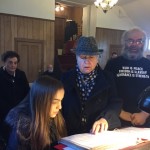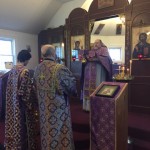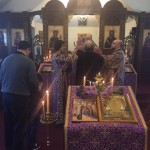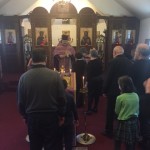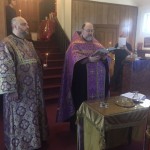On April 9, 2017 the Orthodox Church celebrated feast of the Entry of our Lord Jesus Christ into Jerusalem, also known as Palm Sunday. The Rector of St. George Church, Archpriest Igor Tarasov headed festal liturgical service in our parish.
Before the reading of the Hours the Rector blessed the pussy-willows and distributed them to the parishioners who were holding them during the service resembling the people of Jerusalem who greeted Jesus Christ with the olive and palm branches during His triumphal entry to the city.
Following the readings from the Scripture at Divine Liturgy the Rector preached a homily in Russian. An English translation of that homily is as follows:
“Dear brothers and sisters! This year we look at this time of Lent and Holy Week as at some journey to the Kingdom of Heaven. And today we came to this great holy day of the Entry of the Lord into Jerusalem which is called Palm Sunday. In the Russian Church it is known as the Willow Sunday when we bless and hold the branches of the pussy-willows imitating the people of Jerusalem, especially children, who greeted the Savior with the palm and olive branches.”
“Reflecting upon our spiritual return to paradise, we may recall that there were many various trees grown in the Garden of Eden. There was a tree of knowing good and evil from which Adam and Eve ate, but there was also the tree of life. The trees have a great significance in the history of mankind and in human salvation.”
“And behold, today, on this holy day we picked up the branches of the tree and came to the God’s temple to resemble those children who greeted the Savior of the world, Lord Jesus Christ who was entering the city of Jerusalem. The Gospel says that they cut down the branches of the trees and spread them on the road and greeted Him saying, “Blessed is He who comes in the name of the Lord!” (Mt. 21, 8-9). And the Savior indeed was coming in the name of the Lord; He was walking upon those branches of the trees, so in five days He could take up another tree, the tree of the Cross, upon His shoulders. He was walking to walk later to the Calvary and to die there on the tree of the Cross.”
“In the same way as in there was the tree of life in the middle of the Garden of Eden, thus the Cross on the Calvary became the tree of life that gave back to men paradise which was lost by him. Paradise was lost because of man’s disobedience, because of the man’s will contradicting to the will of God. Now the Son of God and the Son of Man gives up His human will and submits to the will of God and He ascends on the Cross to die for the sins of Adam, so by the Cross the paradise will be returned and we could enter eternal life.”
“This is why, dear brothers and sisters, today we hold the branches of the trees. In this way we commemorate the spiritual sense of the redemptive sacrifice of our Lord Jesus Christ. We may not fully understand the depth of those symbols, as those children who cried out and greeted Christ, did not understand what they were doing. But the scribes and Pharisees who had to have a better understanding, they got angry and told Christ: “Rebuke your disciples” (Lk. 19, 39), “Make them stop!” But Jesus answered to them: “Have you never read, ‘Out of the mouth of babes and nursing infants You have perfected praise’?” (Mt. 21, 16; Ps. 8, 3). Therefore, dear brothers and sisters, today we resemble those children of Jerusalem who had faithful hearts. And we also come to the Lord’s temple holding the branches.”
“Children had no idea what Jesus was going to endure. They did not know that those who forbade them to welcome Christ, later will teach the adults to cry “Crucify Him!” We do know that and we know Whom we are greeting. We know why the Lord entered Jerusalem; we know but we joyfully and piously praise the Savior of the world who is coming to save us. If He did not come, if He did not enter into Jerusalem, if He did not ascend on the Cross, we would never see the God’s paradise, we would never be able to acquire salvation. But through the Savior of the world, Lord Jesus Christ, through His death on the Cross and through His Resurrection on the third day the gates of paradise which became closed because of our transgressions, became open again.”
“Dear brothers and sisters! Let us then turn to the Savior and Lord Jesus Christ, so like those branches of the trees which now, after the winter again become green and blooming, thus our souls would become blooming by the virtues and good deeds; our souls would be risen from the dead as righteous Lazarus was risen by the word of God; so eternal life and eternal joy would be open for our souls; so these branches of the trees would become a reminder of our sins, but also a reminder of our salvation. Since the grace of the Holy Spirit had gathered us today, let us then cry out together to our Savior: “Hosanna in the highest! Blessed is He who comes in the name of the Lord!””
The choir beautifully performed holy day hymns selecting special melodies for the most parts of the Liturgy.
Following the dismissal of the Liturgy the Rector preached a short sermon in English explaining the ideas of his Russian homily. He also reminded the parishioners about our service schedule for the Holy Week and Pascha.
After the service parishioners and the Rector enjoyed delicious meals and interesting conversation during the coffee hour.

